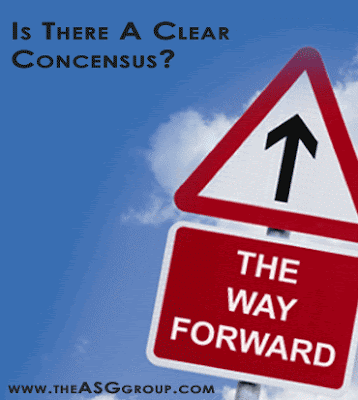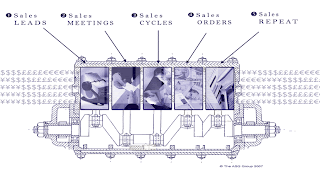





LEADS | CONTACTS |
Leads are generated and prequalified. | Contacts are nurtured. |
Leads require a campaign. | Contacts require a conversation |
Leads are fed a sales pitch, or elevator scripts. | Contacts are provided with useful information, and insights. |
Lead generation is typically start stop, adhoc and reactionary. | The development and nurturing of Contacts is ongoing. |
Short term focus – get the meeting / sale | Long term view – relationship / dialogue |
Leads go stale. | Contacts last forever |
Small number of sources | Multiplicity of sources used |
Typically poorly organized | Live in a database /CRM system |
Traditional marketing focus | Underpinned by a relationship marketing approach |
The lead is seen as a cost | Are an investment |
Is often interruption based | Are permission based |
Based on sources that generate lower conversion rates and less predicatable results - advertising, cold calling, etc. | Emphasis on sources that deliver greater returns and higher conversion rates - introductions, networking and referrals |




 Maximizing sales success requires that the sales team must work in unison, following a clear and consistent strategy.
Maximizing sales success requires that the sales team must work in unison, following a clear and consistent strategy. Managers need to make a greater effort to ensure that there is a full appreciation and understanding of:
· The way forward
· Key sales opportunities and challenges
· What is and is not working
· The various roles and responsibilities
· New improvements, initiatives and innovations
· The key priorities and strategies
· Quantifiables and metrics to be used in tracking performance, etc.
How To Fast Track A Consensus.


Typically, for the complex sale, the sales engine has 5 cylinders, that is key stages of processes in the sales cycle, (the first 4 cylinders) and growing revenue from existing customers (the final cylinder).
Advantages of the Sales Engine View.
The advantages of looking at sales and marketing as an engine are as follows:
• It is a simple, intuitive and visible, plus it is light on terminology and therefore is accessible to all the team (including those outside sales). That makes it an effective tool for coaching, planning and facilitation.
• It looks beyond the people and personalities involved to depersonalize sales and marketing and thereby facilitates an objective view.
• It encourages looking at sales as an organisational capability, rather than just an individual, or team. Sales people will come and go, but the capability must remain with the company.
• It adopts a high level view that integrates all aspects of sales and marketing into a central framework that can serve to rally all managers and their departments around the sales effort.
• It sees all aspects of sales and marketing as being interconnected and interrelated, for example if the leads cylinder is broken this will have an impact on all other aspects of the engine. An engine is the perfect example of multiple components working together to deliver a result - something that the video below, showing an internal combustion engine, demonstrates well.
• It brings systems thinking to bear on sales and marketing, including the concepts of business process re engineering and continuous improvement. Moreover, it encourages looking at sales in terms of a science, rather than a black art, or set of ad hoc, or sporadic activities.
 • It is compatible with, and complementary to existing sales methodologies and processes that may exist within the sales team. It is just another way of looking at sales and marketing and getting a broader consensus.
• It is compatible with, and complementary to existing sales methodologies and processes that may exist within the sales team. It is just another way of looking at sales and marketing and getting a broader consensus.
• It employs terms, such as LEADS, MEETINGS, CYCLES AND ORDERS that are easy to apply. That is because they involve less subjectivity and are activity based. That means they can be tracked using most CRM, or sales reporting methods.


Finding the issue of trust a little difficult to deal with? Well, look at it in terms of the buyer’s risk can help. Specifically the risk of making the wrong buying decision and the consequences in terms of; embarrassment, annoyance and cost. Your concern for and efforts to reduce the buyer’s risk are probably the most effective way to build trust.
Is Trust a Little ‘Airy Fairy’?
A lot has been written about trust based selling, to which we have added more than a few lines. I have to confess however, that like many people, I find it a little strange to talk about the subject.
Let’s face it talking about the buying process and the business case is a lot easier. Trust can be hard to define and hard to measure.
Buyer risk of course is the real issue. That is why trust is important and necessary. Buyers are not guaranteed the outcomes that they require because of a range of business, technical, project/delivery and supplier related risks.
Minimizing Buyer Risk.
The buyer’s job is to minimize those risks. That means the buying decisions is not just about costs and benefits – factors that are somewhat easier to measure. It is also about the likelihood of those costs and benefits and any other consequences that may arise.
There is also the personal risk inherent in the decision itself that is of; being compromised, bypassed, or undermined. That includes the information that is provided, the choice of suppliers that are engaged, the level of openness and engagement with selected vendors.
It is unfair, but as salespeople are remembered for the big deal, buyers are remembered for the bad ones. That means a life of successful purchases could be overshadowed by one mistake, or one miscalculation of risk.
Building Buyer Confidence.
As regards trusting the seller, the buyer has to be confident that the organization will deliver what is promised, do it well, pick up the pieces if anything goes wrong and look out for your personal, team and organizational best interests along the way. Of course, he, or she has to trust the salesperson making the promises, the team that will deliver and the organization that is backing it all up. These are inseparable.
Trust is not the default setting as regards business relationships and particularly buyer-seller relationships. It has to be built up over time. With many cynical buyers trust may not even be possible. However, that does not mean that the salesperson should not work towards the attainment of this idealized ‘trusted advisor’ position. Like Buddhists, for example, not all will achieve the highest states of meditative bliss, however that does not stop them working towards its attainment.
While the buyer won’t buy if he, or she does not trust the seller, nor will he or she buy if key requirements (value for money, compliance, business impact) aren't clearly met. Trust alone won’t swing it. Let us be clear about it ‘trust’ is only part of the equation. The buyer’s business case has another word for it - that is risk.
How does the salesperson and the sales approach minimise buyer risk? Well it counts right across the sales cycle, for example:
· Replace marketing brochures, with insightful white papers
· Develop customer case studies and effectively use customer testimonials
· Develop the position as a thought leader
· Provide access to your experts
· Allow your prospect to experience your services/products during the sales cycle
· Employ effective pilots and demos
· Understand the buyers requirements before advocating a solution
· Don’t try to impose your sales process on the buyer
· Earn the right to ask questions and employ tact when you raise sensitive issues
· Focus on helping, not selling
· Focus on the business case
· Show your commitment to the prospect
· Demonstrate professionalism and respect at every turn (keeping promises, turning up on time, keeping notes of meetings, listening & showing a personal interest)
· Follow the rules of engagement and access
· Share information with the buyer
· Don’t tell stories that suggest you are breaching the trust of other customers.
· Answer direct questions with direct answers
Building trust takes time, trusted relationships do exist between buyers and seller. These relationships can be built by small, medium and large scale enterprises selling high value services and solutions. According to one professional buyer "trust helps buyers buy and sellers sell, it minimizes risk on both sides. Without trust you have dysfunctional buying and selling which helps know one".

 So, it stands to reason that as buying is the inverse of selling, the buyer turned seller could be a formidable seller indeed. The buyer turned salesperson would clearly have some valuable insider information, as well as some very applicable systems and skills.
So, it stands to reason that as buying is the inverse of selling, the buyer turned seller could be a formidable seller indeed. The buyer turned salesperson would clearly have some valuable insider information, as well as some very applicable systems and skills. 
 Too often marketing and sales initiatives are stand alone, as opposed to integrated and consistent.
Too often marketing and sales initiatives are stand alone, as opposed to integrated and consistent. 